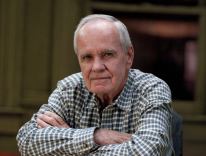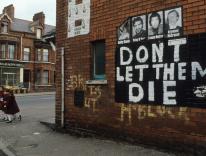These four books on Benedict XVI, hustled into print just months after the installation of the new pope, are written by four journalists working in Rome (two of them are American, one is Italian, and one is German).
They show the inevitable haste of writers anxious to get into the marketplace; at least one (by Marco Bardazzi) is barely more than an extended potted biography: one hundred pages plus thirty pages of filler, including a chronology of the pope’s life and some snippets from his recent writings.
Let God’s Light Shine Forth
The Spiritual Vision of Pope Benedict XVI
Edited by Robert Moynihan
Doubleday, $17.95, 215 pp.
Let God’s Light Shine Forth is an anthology of recent addresses by then-Cardinal Joseph Ratzinger. These talks are mainly “spiritual” and homiletic; the book includes no serious theological essays. As a consequence, the texts do not illuminate the thinking of the new pope in any detail. Robert Moynihan’s introduction makes it clear that he is an unabashed admirer of the pope; he writes extensively about his conversations with the former cardinal. Unfortunately, most of what Moynihan reports is hardly news, and he does not provide enough context. For example, he should have noted that Dominus Iesus was objected to not only by so-called progressives, but also by people in the curia who thought the document needlessly pugnacious. The only new thing I learned from Moynihan is that the first submission of Ratzinger’s thesis—the so-called Habilitationschrift, which was eventually turned into a brilliant work on Bonaventure’s theology of history—was rejected. Ratzinger, then, had something in common with the late Karl Rahner, SJ: each had a doctoral thesis rejected in his early career. This will be enormously consoling to my doctoral students.
In the Vineyard of the Lord
Marco Bardazzi
Rizzoli, $16.95, 138 pp.
Bardazzi’s In the Vineyard of the Lord also lacks critical distance, though parts of it are interesting. I was intrigued by the section on the relationship between Ratzinger and the late Hans Urs von Balthasar, who shared an interest in the importance of beauty as a theological category. Quite interesting too was the section on the founding of the journal Communio. It served as a counterweight to the journal Concilium, founded by the liberal theologian Hans Küng, Ratzinger’s senior colleague at Tübingen in the late 1960s. Bardazzi also provides some illuminating observations about the success of Ratzinger’s most popular book, Introduction to Christianity, a profound meditation on the creed. Bardazzi is much better than Moynihan on the reaction to Dominus Iesus: he notes the somewhat cool reception the document received from the ecumenist Cardinal Edward Cassidy and the then archbishop of Milan, Carlo Maria Martini, both of whom had far greater experience than Ratzinger in interreligious dialogue.
Pope Benedict XVI
A Personal Portrait
H. J. Fischer
Crossroad, $19.95, 213 pp.
One of the most sophisticated of the current crop of papal books is Pope Benedict XVI: A Personal Portrait by German journalist Heinz-Joachim Fischer. Fischer, the longtime Rome correspondent for the Frankfurter Allgemeine Zeitung, studied philosophy and theology at the Gregorian University, and has had a long friendship with Ratzinger. He has known him since the new pope’s days as a professor at Regensburg.
Fischer intuitively understands a crucial point: namely, that it is one thing to be the head of a Roman congregation, and it is quite another to hold the chair of Peter. Fischer also grasps that the division of the world into progressives and conservatives, or calibrating too finely where the pope might place on such a continuum, is an exercise in banality. As he points out, it is the task of the pope to be traditional and conservative: he is the heir to a tradition and is charged with conserving it. It is not the job of popes to be innovative and, as history shows, few popes have been. Popes are, almost by definition, not innovators, but enablers of the tradition. To do that creatively is not easy. John Paul II sought to do so, but failed at times: Veritatis splendor, for example, failed to adequately show how the church’s moral teaching is, in all its rigor, splendid.
The Rise of Benedict XVI
John Allen Jr.
Doubleday, $19.95, 249 pp.
John Allen’s The Rise of Benedict XVI is a bit of a hybrid. In the first part Allen recounts the last days of John Paul II and the election of the new pope with the verve, even-handedness, and journalistic skill that we have come to expect from this corrrespondent for the National Catholic Reporter. The last part of the book, just over one hundred pages, gives us Allen’s revised profile of the pope (he had written a not entirely sympathetic portrait of Cardinal Ratzinger in 1999). This section is based on Allen’s careful reading of Ratzinger’s work at the Congregation for the Doctrine of the Faith (CDF), and the many speeches the cardinal delivered to various congresses in Europe. The brief overview is, by a wide margin, the most balanced and illuminating of the papal biographies under review.
To his credit, Allen refuses to place the pope in a box labeled “reactionary” or “conservative.” His book gives us a more complicated portrait. For example, Allen points out that, as head of the CDF, Ratzinger served as a useful brake on some of John Paul II’s more exuberant endeavors. Ratzinger reportedly told the pope that he could not exercise papal infallibility to affirm the ban on contraception in Veritatis splendor. Nor was the German cardinal pleased by the large number of saints canonized by John Paul. Ratzinger also persuaded the pope not to make the very odd Austrian Bishop Kurt Krenn the archbishop of Vienna. (Krenn later resigned following a sex scandal at Austrian seminaries.) Allen also offers an excellent analysis of the CDF’s brief against liberation theology, noting that it was the Marxist premise and not the “preferential option for the poor” that was the target of the critique.
Allen’s examination of the pope’s writings on Christianity in Europe is particularly insightful. There are two ways of viewing the situation on the continent: thinkers like Oswald Spengler believed Europe is on the verge of inevitable collapse; others, like the late Arnold Toynbee, believed that a small group of reformers can reinvigorate the culture. According to Allen, Benedict is more inclined to the latter position, which refutes the simple-minded view that the pope wants a “leaner, meaner” church.
All of this is not to say that the pope is likely to give comfort to the Call to Action wing of the church. Still, Allen’s book provides evidence that Benedict has a profound faith in the possibility of a newly invigorated Christianity—and not one on the model of a “New Christendom.” It seems likely that the pope will foster what Cardinal Godfried Danneels has called a “culture of debate” in the bishops’ synods about how such invigoration can take place. That would be a step forward from the lackluster synods of the past.
For a current look at the new papacy, Allen is the person to read. He is fair, free from the oracular pomposity of some American commentators, and, as always, highly readable. But in the final analysis it is too early to make a fair judgment about the pope’s thinking, even though the main lines of his professional and pastoral career are well enough known. At this stage of his papal life we must carefully distinguish his early works of theology from his pastoral talks, the long interviews he gave while in Rome, and the documents he wrote at the CDF. As Cardinal Ratzinger, he served John Paul II well because he was a brilliant theologian on whom the pope wisely relied; now he is the pope and we must wait to see how those great gifts will be used. I agree with those who say that he is the best theologian to occupy the Chair of Peter since, perhaps, Gregory the Great. Now one waits for his first encyclical. One thing I did learn from these hasty works: the pope loves Mozart, which made me think of Karl Barth’s great quip: When the angels are on duty, they play Bach; off duty, they play Mozart.
Consuming Visions
Mass Culture and the Lourdes Shrine
Suzanne Kaufman
Cornell University Press, $34.95, 255 pp.
Has there ever been a visitor to Lourdes who has not remarked with distaste about the tacky souvenir shops and cheesy hotels? The thesis of Consuming Visions is that commercialism is what made Lourdes so famous and powerful. When the anticlerical government tried to shut down the shrine in the early twentieth century (they saw it as an affront to enlightened culture), a violent howl went up: closure would wreck the local economy. After all, train lines had been laid to bring pilgrims to the shrine, businesses depended on visitor spending, and expenditures for Lourdes postage stamps in just one anniversary year ran to over one hundred thousand francs. The raging debates between the atheist doctors and their religious opponents be damned; this was business we were talking about. Émile Zola may have scoffed at Lourdes but that was beside the point.
Suzanne Kaufman illustrates how the interests of Catholics who defended the validity of the apparitions coincided with the interests of businessmen who manufactured postcards, sold Lourdes water, opened up shops and hostels, and provided transportation for the pilgrims. The Catholic literary elite had their doubts about the commercialization of Lourdes; they worried it would become a kind of pious spa. Léon Bloy was especially splenetic on the subject. He much preferred the visionaries of La Salette, who claimed to witness a grieving Madonna who warned that France would suffer some vast tragedy if the nation did not repent. Bloy, like Paul Claudel, Charles Péguy, and Camille Huysmans, was suspicious of Lourdes, seeing it, in Kaufman’s words, “as soft and feminizing, promoting a sentimental theology that denied the spiritual importance of suffering.”
Kaufman’s book includes a wonderful chapter on the role of healing at Lourdes. As she exhaustively documents, reports of healing were vigorously contested by the nonreligious medical establishment. (This, after all, was the time in which positivism in France was coming of age.) Public debates were held in the auditoriums of Paris at which counterexplanations for the healings (miracle versus “mind cure”) were acrimoniously exchanged. One of the dramatis personae in this debate was the famous Professor Charcot, who later became mentor to a young Viennese researcher named Sigmund Freud.
Kaufman’s book should not be judged reductionistic; she does not argue that Lourdes is a phenomenon limited to the commercial energies of its promoters. She surveys not only the “material culture” of Lourdes, but also the intellectual culture of nineteenth-century France. Consuming Visions serves as a nice complement to the wonderful Lourdes: Body and Spirit in the Secular Age (Penguin) by Ruth Harris. Harris is a sprightlier writer, but Kaufman is at least her equal in terms of research. Both shed valuable light on a shrine that still draws the faithful to a once obscure village where a young woman named Bernadette lived more than 150 years ago.
The Oxford Dictionary of the Christian Church (third edition revised)
Edited by F. L. Cross & E. A. Livingstone
Oxford University Press, $125, 1,800 pp.
Eight years after the publication of the third edition of the Oxford Dictionary of the Christian Church (ODCC), a revision has been released. The editor has inserted a few new, shorter articles (including one on the new pope), revised some scholarly opinions, and freshened up some of the bibliographies. The ODCC comes at a hefty cost, but it is well worth the price. I keep several yards of reference books on the shelf above my desk, but this is the one I consult most often. The entries are both accurate and succinct, clearly laying out complicated theological issues. Further, the work is about as comprehensive as possible given the vastness of the Christian tradition.
The revised edition is roughly twenty pages longer than the third edition, and if my eyes do not deceive me, the pages are set a bit more closely and the print seems lighter. The changes (probably made to save space) in no way make the text harder to read. Anyone who owns the third edition should probably keep it. But if one were looking for a reliable reference book on Christianity, the revised version is a good buy. I am delighted that the ODCC is an ongoing enterprise, since it is an indispensable work for any serious student of the Christian tradition.
A Sense of the Sacred
Theological Foundations of Christian Architecture and Art
Kevin Seasoltz
Continuum, $29.95, 394 pp.
Kevin Seasoltz is one of the best-known liturgical scholars in the United States. He is a longtime editor of Worship and a professor at St. John’s University in Collegeville, where he is a monk. In A Sense of the Sacred, he employs his formidable learning to explore the relationship between sacred art, architecture, and theology. The bulk of the book is a history of Christian art and architecture from the pre-Constantinian period to the present. Seasoltz notes how these art forms reflect certain theological ideas. For example, the design of early Roman basilicas tells us much about liturgical understanding in that period, just as baroque churches tell us a good deal about the militant era after the Protestant Reformation.
The most illuminating part of the book describes the rise of the modern liturgical movement and the efforts (not always successful) to express the achievements of that movement in art and architecture. Anyone who thinks these matters peripheral should meditate on the passions that arise every time a church is refurbished. Where the tabernacle and baptismal font should be placed, how sacred art should be displayed, whether the windows should be abstract or figural, the question of kneelers—all of these issues give rise to parochial arguments, letters dispatched to the local ordinary, and so on. These are not trivial arguments, for people intuitively understand that behind symbols are ideas that have deep meaning and significance. Books like A Sense of the Sacred are valuable because they remind us that theology is expressed in iconic representations as well as in verbal utterances.
The only weakness of Seasoltz’s book is its lack of illustrations. Perhaps the cost of artwork would have made the book prohibitively expensive. Whatever the reason, the result is that one must imagine the buildings from their descriptions in the text. Still, this is an informative work and a significant exploration of our common worship life. It will be of interest not only to students of liturgy, but to students of theology and history as well.
Please email comments to [email protected] and join the conversation on our Facebook page.
Previous Story
A Tale of Two Cities
Next Story
Worst Work


